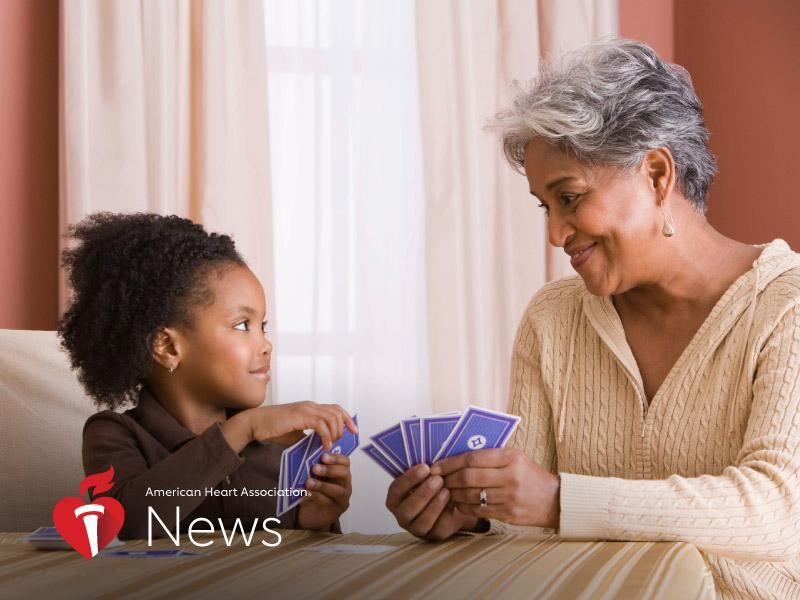FRIDAY, May 7, 2021 (American Heart Association News) — Barbara Stopfer hasn’t had much of a social life since her husband died six years ago. She stopped seeing coworkers, too, after her heart condition required her to cut back her hours and work remotely.
But the 79-year-old stayed connected to people at her residential community for older adults, through activities like mahjong and the occasional lunch outing. Her brightest hours were when her adult children came to visit, her daughter often surprising her.
Then the pandemic hit. And what was left of her social life came to a screeching halt.
“The isolation is very painful,” she said. “It causes anxiety, which is no good for my heart. I can honestly say it’s been the toughest time of my life.”
Health experts say social isolation isn’t just tough emotionally, it can cause physical harm to aging adults. It raises the risk of heart disease and stroke by roughly 30%, the risk for dementia by 50% and significantly raises the risk of dying prematurely.
For more than a year, the pandemic put distance between people like Stopfer and their friends and family members. As a growing percentage of the population gets vaccinated, they are slowly restoring those connections. The Centers for Disease Control and Prevention says it is now safe for fully vaccinated people to gather without social distancing, and Stopfer’s daughter, Abby, immediately jumped at the chance. She dropped in and surprised her mother with a long-overdue hug.
“It was marvelous to feel her touch!” Stopfer said.
In-person interactions like these are critical as people age, said Jeffrey Burr, a gerontology professor at the University of Massachusetts in Boston. His research focuses on the link between social relationships and health. “It’s very important to get out to see not just your relatives, but your older neighbors and friends and people who go to your church.”
People who are isolated are less likely to keep doctor appointments or follow medical advice, such as taking their prescriptions regularly, he said. It’s because there’s no one to encourage or remind them to do those things.
Studies also show isolated older adults are less physically active, more prone to sleep disorders, anxiety and depression, and less likely to eat a healthy diet.
“That has negative consequences for your cardiovascular health, your immune system and your nervous system, as well,” Burr said.
But while social isolation is considered a risk factor for many aging-related illnesses, that doesn’t mean everyone who lives alone will have those problems, said Judy Poey, a former health investigator now working as a health program officer for the United Way of Central Maryland.
“It’s a risk factor,” she said. “It’s not deterministic.”
Poey led a 2017 study published in The Gerontologist that showed living alone and feelings of loneliness or perceived isolation were associated with greater cognitive difficulty in older adults. At the same time, those who had more social support and engagement had a lower risk for all types of dementia.
She now oversees a program that delivers “stress relief” kits to community members, with tools such as a stress ball and soothing noise makers. They also include a list of questions to help people identify issues that can arise from social isolation, such as, “Are you comfort eating?” and “Are you skipping meals?”
With the kit comes a number to call if they want someone to talk to, or need to be connected to other services, such as meal deliveries. “It’s a way to check in on our neighbors,” Poey said.
When in-person social interactions aren’t possible, technology can help, Burr said. Video chats or even phone calls allow at least some form of social contact. But, he cautioned, it isn’t enough. “I think of it as supplemental. It’s better than nothing.”
Stopfer used video chats to stay in contact with her children throughout the pandemic. She also used the internet to widen her mahjong network, meeting new players online and even participating in virtual tournaments.
While she’s now fully vaccinated, she still limits in-person contact. The community center at her retirement village remains closed, as does the pool. Not all of her neighbors wear masks, so she’s not yet comfortable socializing with them.
“I’m still really feeling isolated,” she said. “It’s tough, but when I feel I’m sinking, I think of my kids.”
Poey said it’s important to have conversations with aging family members about how much social interaction they want or need, not just during the pandemic, but even as more typical social activities resume.
“Some people prefer more social contact, some people don’t. Some people prefer more ‘me’ time,” she said.
But, if someone develops symptoms of cognitive decline, that’s the time to talk to a health care professional to figure out next steps, Poey said.
“Do they live with a family member or friends or seek formal supports if this happens? What is the plan?”
American Heart Association News covers heart and brain health. Not all views expressed in this story reflect the official position of the American Heart Association. Copyright is owned or held by the American Heart Association, Inc., and all rights are reserved. If you have questions or comments about this story, please email editor@heart.org.
By Laura Williamson
Copyright © 2025 HealthDay. All rights reserved.

